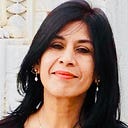Disney at 100: Mickey and multiculturalism
How real is the fairytale? And can everyone really join in?
Welcome to This Week, Those Books, your rundown on books new and old that resonate with the week’s big news story.
The few minutes it takes to read this newsletter will make you smarter, faster. If you’d rather listen, click on the audio button above for a human, not AI, voiceover by my close collaborator Michael. These book suggestions — complete with summary, quotes and a visceral response rating — could point you to your next read or sort out watercooler convo and supper small talk. Please share. Find me on Twitter, LinkedIn, Facebook or YouTube.
Yours,
The Big Story:
The Walt Disney Company, the world’s biggest entertainment firm, is marking its 100th anniversary this month with a specially produced short film that features 543 iconic Disney characters from Mickey Mouse to Moana and a centenary exhibition that will travel the world over the next five years. But the canonical American brand that created a magic kingdom, faces challenges, both commercial and cultural.
The Backstory:
- Walter Elias Disney, 21 and his brother Roy set up an animation outfit, the Disney Brothers Cartoon Studio, in October 1923. It took five years to have their first smash hit, Steamboat Willie, one of the world’s first animated films with sound. It featured a certain Mickey Mouse.
- The studio went from strength to strength. Snow White and the Seven Dwarves (1938) was one of the first full-length animated feature films in colour. Pinocchio (1940) marked the Disney tradition of finding old stories to re-tell. With Bambi (1942) Disney created another winning habit — buying the film rights to a popular novel. The Disneyland theme park project started in the 1950s. From the late 1980s, Disney celebrated a slew of award-winning films including The Little Mermaid, Beauty and the Beast and Tarzan.
- Today, Disney rules the box office, reaches 130 countries, has broadcast and cable-TV networks that rake in billions and more subscriptions than Netflix. It is the acknowledged leader, as one former Disney executive says, in building “worlds and characters, not just movies”.
- But some criticise Disney for the extractive mining of myths and legends from around the world, which it is said to process into Western products that reinforce racial stereotypes and misrepresent ethnic cultures. Critics point to these problematic Disney films, among others: The Three Caballeros (1944) set in Mexico and Brazil; The Jungle Book (1967) set in India; Aladdin (1992) set in the Arab world; The Lion King (1994) set in Africa, and Pocahontas (1995), which portrayed Native Americans.
- Hawaiian academic Ida Yoshinaga has said Disney’s 2016 portrayal of “its lone Pacific princess, Moana…(an) indigenous heroine of color” had left Pacific Islander and Native Hawaiians feeling “disrespected and spiritually exploited”.
This Week, Those Books:
- An admiring look at Disney’s inclusiveness.
- A collection of stories from the women who worked for Disney.
- A compelling biography of Walt, creative entrepreneur.
Originally published at https://thisweekthosebooks.substack.com.
